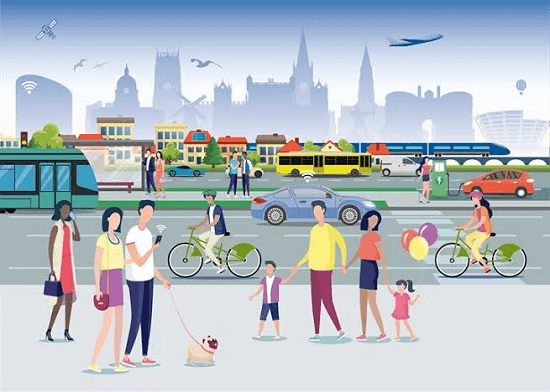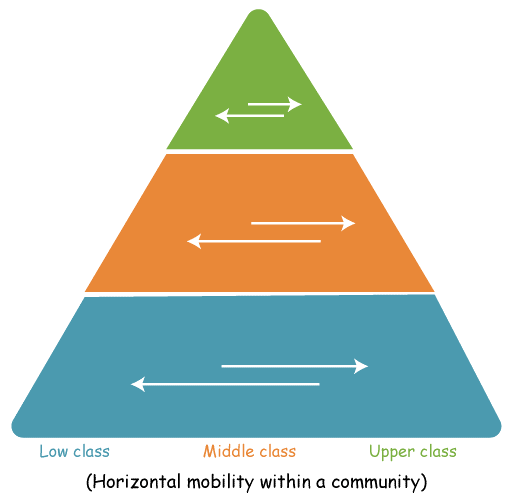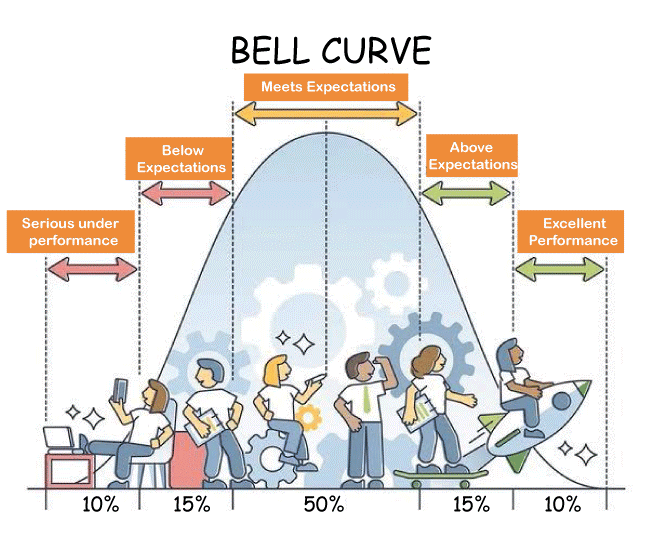Mobility DefinitionMobility is the capacity for movement and the ability to move from one location to another utilizing one or more modes of transportation to fulfil daily demands. As a result, it is distinct from accessibility, which describes the capacity to get access to or arrive at a desired activity or action. Muscle, strength, endurance, and mobility are usually the things we consider most, whether one is an athlete, weekend warrior, just getting started with exercise, trying to keep active, young, in your prime, or getting older. Developing or maintaining a high-performance fitness level should be the primary goal if it's a young athlete. If one is in their golden years, they might merely want to keep their independence and have pain-free movement?no matter what stage of life, mobility is a crucial element of physical exercise and fitness. What is Mobility?Mobility is not a fad, even though it has become popular in many fitness circles. In reality, physical therapists are the driving force behind the entire movement (pun intended) to emphasize mobility as a component of rehabilitation following injury and prevention and enhance the quality of life for many patients. Mobility relates to how effectively, freely, and well you can move. Being mobile means having the freedom and regular movement of the entire body. 
The range of motion, endurance, and muscular strength are all included. Excellent mobility allows one to move around efficiently and effectively without constraints or challenges. Having the best range of motion is what it signifies. However, this does not imply more flexibility, even if this is unquestionably a component of adequate mobility. The American Council on Exercise (ACE) refers to mobility as the foundation of fitness since it enables proper bodily movement. Without mobility, the postural stability deteriorates, causing the muscles to move erratically and increasing the chance of discomfort and injury. When evaluating an employee to see if they can carry out the essential duties of a job, mobility is one of the criteria taken into account. A certain amount of movement is necessary to do some occupations safely. A worker's physical capabilities can be evaluated to see if they can carry out a task efficiently and safely. 
A mobility examination looks at more than simply a person's ability to climb or walk. Instead, the test participant will often be required to do various activities, such as kneeling, squatting, sitting, crawling, and balancing. In rare circumstances, a mobility test may also determine if a person has enough movement to operate equipment like a forklift. It is possible to match employees and jobs more effectively by evaluating the physical capabilities of each party and the physical requirements of each work. Why is Mobility Vital?One must be mobile to be physically healthy and live a long time. When active in a joint, one may not move it through its complete range of motion if it has impaired mobility. The pressure may be distributed unevenly; the joints' articular surfaces may wear down more quickly, and the muscles and nervous system may develop knots and discomfort due to the body's adaptation to the joint's limited mobility. 
Internal connective tissues shorten and tighten when we are in a state of stasis for an extended period, such as when we spend eight hours a day, five days a week, at a desk. Fascia is the name for this connective tissue. The interior body's saran wrap is similar to the fascia. It is a delicate, receptive tissue mainly composed of collagen. It preserves the body's structural integrity by encasing muscles and other organs. It can make someone feel stiff, cause pain, and even impede organs if it isn't adequately mobilized. When the human body is mobile to its maximum potential, it offers a range of activities and completely functioning motions. We rely on our ability to move about constantly. When walking, climbing, and ascending steep rocks with big stairs, performing a HIIT exercise, in the garden, or if we fall accidentally and reach out to catch ourselves. Mobility benefits us constantly. Mobility in PhysicsMobility can be defined in a variety of ways, but in physics, when we discuss a solid state, the measurement of how easily a specific type of electrically charged particle moves through a material that is solid when that material is affected by an electric charge, we can say that mobility has occurred between the charged particulate and the electric field. These particles must collide with the solid's atoms as they move forward under the influence of the electric field. Now that this phenomenon has started to occur, one can use it to define drift velocity, the average speed at which particles travel due to an electric field and a collision. Also apparent is the presence of negatively charged electrons in the charge carrier of most metals. The drift velocity now allows us to define mobility as the value of the drift velocity per unit of electric field strength, meaning that the faster a particle moves at a given electric field strength, the greater its mobility. Mobility may also vary with temperature depending on the solid and the specific type of particle it is in. By using semiconductors as examples, where the electric current is also carried by the motion of positively charged particles called holes, each of which corresponds to the absence of an electron, it is possible to explain how mobility depends on the solid. However, this condition gives rise to complications concerning the individual mobilities of the holes because many electronic devices need them for proper operation. Hence, mobility in Physics (solid-state Physics) refers to the ease with which charged particles travel through a solid material when an electric field is applied. Potential differences across electric circuits produce electricity, pushing electrons to move from one end to another. In other words, the mobility of charge carriers such as electrons refers to their ability to move. Social MobilityWhen a person's social position changes from one to another, this is referred to as social mobility. The shift might be more significant, lower, intergenerational, or intragenerational, and it's not always possible to tell whether it's for the better or worse. Pitirim Sorokin, an American sociologist and political activist of Russian descent, first popularized the idea of social mobility in his book "Social and Cultural Mobility." According to him, neither a genuinely open society, like the class system, nor a wholly closed society, like the Indian caste system, exists. 
Sorokin contends that no two cultures are identical regarding the encouraged and discouraged movement and that the rate of social mobility may differ throughout time. The level of social development will determine this. As people change positions throughout time due to numerous social interactions, such a societal transition may occur. As people strive to achieve new jobs that provide them with a higher quality of living and more significant rewards, they are driven by various social elements, which, more or less, benefit them. To climb the social mobility ladder, people compete and collaborate in society. Types of Social MobilityPeople can experience many forms of social mobility at various points in their life, and these forms can take a variety of shapes. Although they are separate from one another, the multiple mobilities frequently cross across. For analysis, they are solely distinguishable. 1. Horizontal mobility: When a person switches jobs, but their general social position doesn't alter, this happens. For instance, if a doctor hits from practicing medicine to teaching in a medical school, their profession has changed, but their status and social position are probably unaffected. According to Sorokin, horizontal mobility is a change in a region's territorial, political, or other horizontal movements without a corresponding shift in position vertically. 
2. Vertical mobility: This is used to describe a person's social standing changing due to a career, political affiliation, or religion change. A person progresses through the social strata. Vertical movement can be upward or downward. Instead of surviving alongside its current group, ascending entails a person migrating from a group in a lower stratum to a higher one or developing a comparable group with a higher social rank. Descending mobility can happen, for instance, when a businessman experiences losses and is compelled to file for bankruptcy, which causes him to transfer to a lower social class. 3. Upward mobility: When someone ascends socially, they do so from a lower to a higher position. It can also refer to those with authority positions within the same socioeconomic group. Upward mobility can cost people money, even though it is often regarded as a desirable thing. Leaving familiar surroundings, such as family and places, is sometimes necessary for someone to advance in their career. They might also need to alter their behaviors and way of thinking. Due to their upward mobility, the individual must adjust to the new environment and adopt new habits in the new community. 
4. Downward mobility: When a person travels from a higher to a lower position in society, this is known as downward mobility. It can happen when someone is discovered engaging in wrongdoing that could cost them their current employment. People who experience a sharp decrease in their social position may find downward mobility particularly unpleasant. Given that the new environment differs from what they are used to, they can have difficulty adjusting. An illustration of how much a society values equality of opportunity and structure is seen in downward mobility. 5. Inter-generational mobility: Inter-generational mobility occurs when a generation's social standing shifts from one to the next. The transition might be either upward or downward. For instance, a parent may have been employed in a factory while their child pursued a career in law or medicine. The generation adopts a new style of thinking and living due to such a cultural shift. The disparities in upbringing between parents and their children, demographic changes, and employment changes all impact intergenerational mobility. 6. Intra-generational mobility: A single generation's lifetime sees the intra-generational shift in social status. It may also be used to describe a change in authority between siblings. One way is through progressing professionally up the corporate ladder. For instance, a person may begin their job as a clerk and move through life to a senior position, like a director. Additionally, one sibling may get to a more senior position in society than another sibling or sibling. 
In NutshellIn a nutshell, the capability to traverse comfortably and smoothly between destinations is often referred to as mobility. It usually includes a range of approaches for travel, such as driving, strolling, biking, or riding the bus for transportation. One of a person's basic needs is mobility, which significantly influences society in terms of production, economics, social welfare, coping with climate change, and other areas. 
Mobility, described as individuals moving from one location to another, is a self-evident phenomenon constantly changing in terms of mean, speed, and direction. It causes transformation in all of its manifestations. Mobility comprises much more than just being able to move about; it is deeply laced with significance. Its research is crucial to comprehending social development and urban behavior because changes in how persons move or remain stationary profoundly impact other parts of existence.
Next TopicPan Definition
|
 For Videos Join Our Youtube Channel: Join Now
For Videos Join Our Youtube Channel: Join Now
Feedback
- Send your Feedback to [email protected]
Help Others, Please Share










